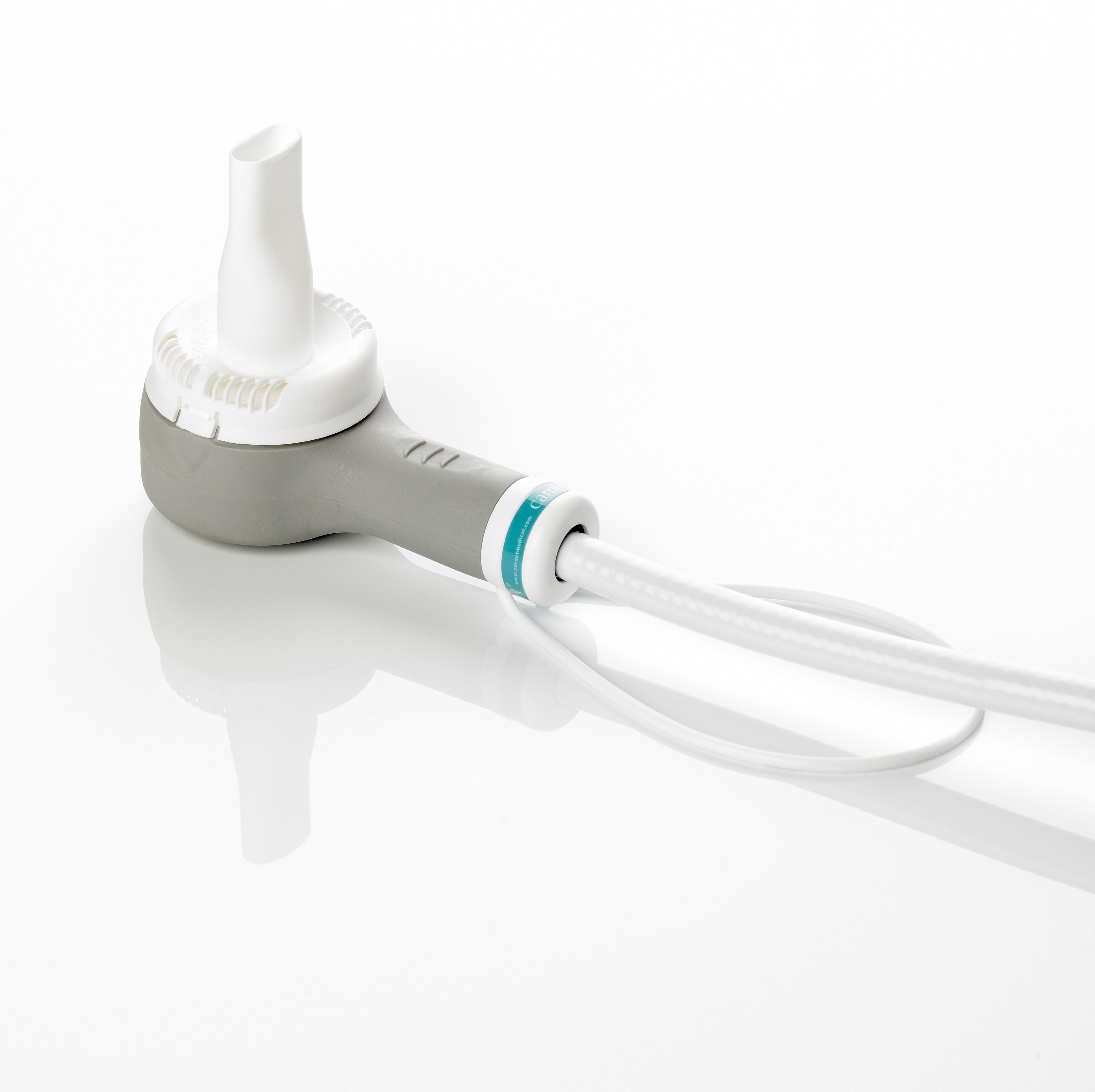High flow oxygen therapy
When a cluster headache attack strikes, it is unpredictable. For sufferers, who may experience up to eight episodes a day, the two most effective ways of aborting the attack are sumatriptan delivered by subcutaneous injection or inhaling oxygen at 100% purity. As triptan based medications are unsuitable for patients at high risk of coronary heart disease, oxygen therapy is usually the preferred option.
Oxygen therapy should be prescribed by a doctor and is the safest therapy available for cluster headaches. Oxygen is usually delivered at a flow rate of 7 to 15 litres per minute, and when provided for 15 minutes at the start of the attack has been proven to be effective, with most patients experiencing significant relief within that time.1
Oxygen therapy has few or no established side effects when used in the prescribed quantities. Cluster headache sufferers can use oxygen therapy multiple times a day, either as a standalone treatment or in conjunction with other medication as prescribed by a doctor.

Oxygen delivery systems
The method of delivering oxygen can be an important factor that contributes to the effectiveness of the treatment. Above all, during oxygen therapy, it is important that the amount of outside air and exhaled carbon dioxide entering the patients’ lungs is minimised.
Delivery systems for administering high flow oxygen therapy include:
Non-rebreathe mask
Conventionally, oxygen therapy has been delivered using a non-rebreathe mask. However, non-rebreathe masks deliver less than 100% oxygen and this decreases as the patient’s respiratory rate increases. When a patient hyperventilates and breathes quickly, it results in them rebreathing some exhaled carbon dioxide at the next inhalation.2
Demand valve

Demand valves are considered particularly effective at delivering high flow oxygen therapy. The demand valve synchronises oxygen delivery with the patient’s breathing. When the patient inhales, the demand valve opens and oxygen is delivered. When the patient stops inhaling the valve closes.